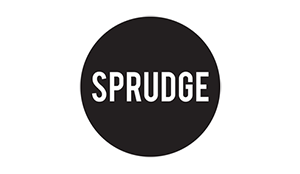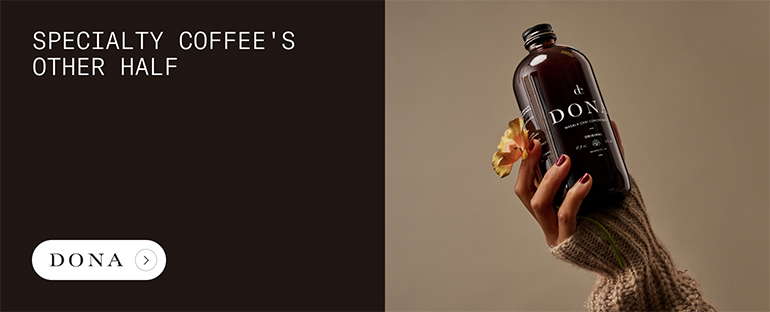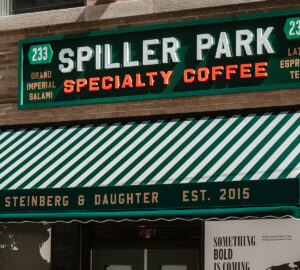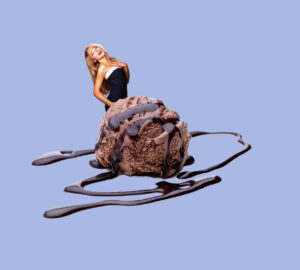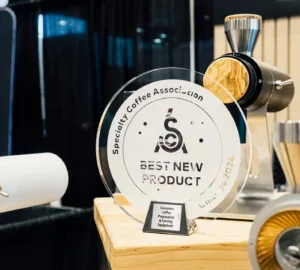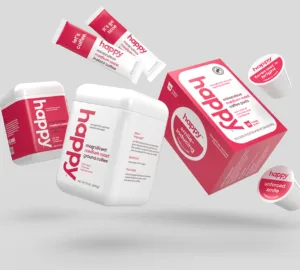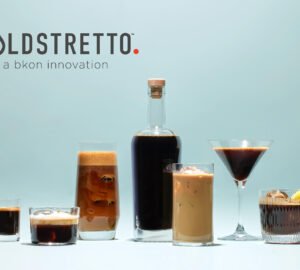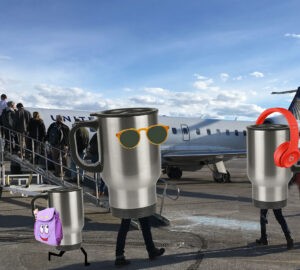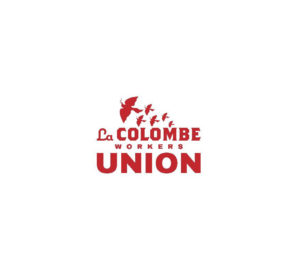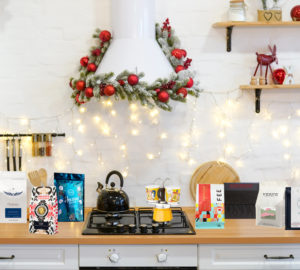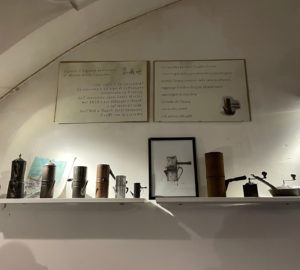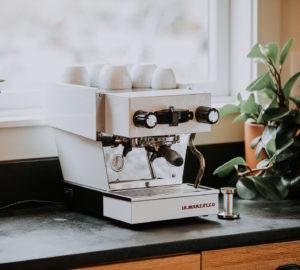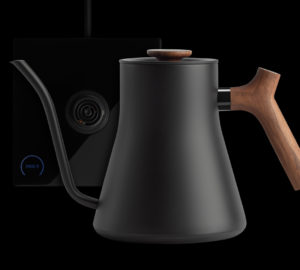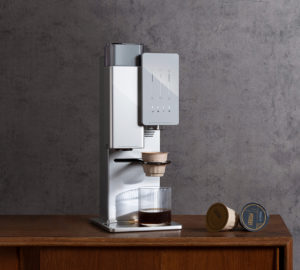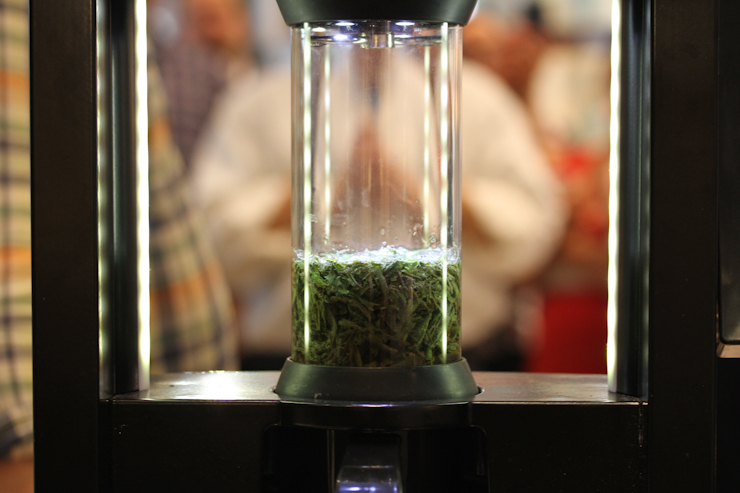
In a beverage event of truly synergistic proportions, last week, the folks at BKON teamed up with Kilogram Tea for a demonstration at Intelligentsia’s newest cafe in New York City’s Herald Square. The invitation-only event showcased both the unique powers of the BKON, detailed earlier in these pages, and the subtle beauties of early spring harvested teas. Kilogram (a subsidiary brand of our friends and partners at Intelligentsia Coffee) dispatched their tea buyer Doug Palas to Manhattan for the event, who, alongside BKON’s David Latourell and Lou Vastardis, showed off the unusual–and princely priced–brewer’s capabilities.
The demonstration itself was uniquely staged. Amidst the late-stage construction of the Urban Outfitters store surrounding Intelligentsia, baristas passed out samples of Green Needles, organic Silver Needles, organic early spring Dafang, and early spring White Peony teas while bass music boomed next door and the front door alarm intermittently klaxonned. While it wasn’t your traditional environment for a tasting of delicate teas, neither is BKON, in its hulking countertop stature with bright colored portafilter baskets and programmable touch screen, your traditional brewer. And though BKON is not yet on retail counters, Vastardis spoke to its great potential for stores due to its programmability and repeatability. A tea expert such as Palas could for example determine optimal BKON brewing recipes, and retail outlets could reproduce his results remotely.
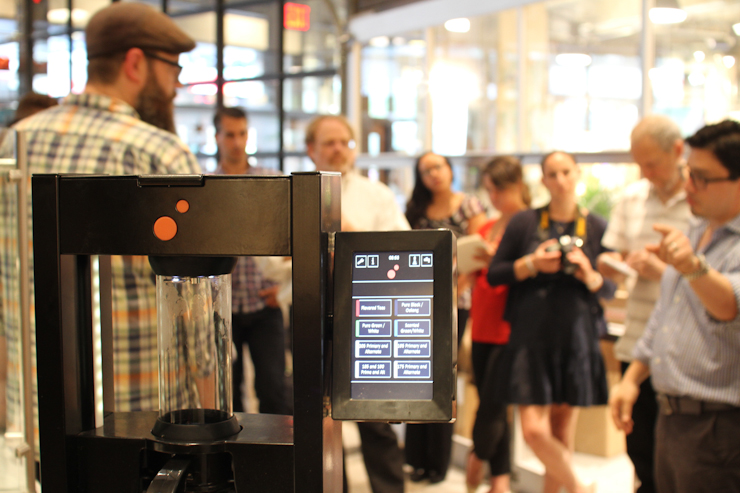
“Doug could be in the lab in Chicago, but your tea would still taste the same as if he were in your apartment making it for you,” promised Vastardis. (You’d miss out, however, on any of Mr. Palas’ storytelling or thinly veiled visual appraisals of your pantry shelves.)
Question-and-answer sessions focused less on tea (or coffee–a sector BKON isn’t quite ready to market to, while they refine the machine’s capabilities) and more on the open-ended future possibilities of the machine itself. When might a consumer model be available? (Not yet.) Would infusions with lard work? (“There’s no reason that lard shouldn’t work!” assured Latourell enthusiastically.) Could you put alcohol in it? (How convivial!) And so on.
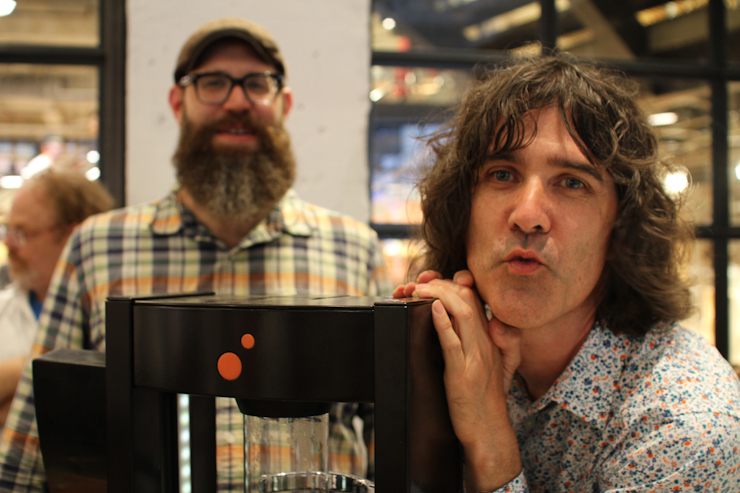
As it stands now, though, BKON is firmly entering the negative-pressure-infused-beverage gate through the tea door, so we took a moment to sit down with Palas for a quick lesson on tea seasonality inspired by this delicious event.
Is the BKON the most expensive gadget you’ve ever made tea on?
Yes. It is also the only device I’ve brewed tea on with a touch screen, water temperature accuracy within one half degree, and the added steeping variable of reverse pressure.
You demonstrated a few early spring teas at the new Intelligentsia cafe in Herald Square. Which were they and why did you select them?
Each year I select a few Mingqian teas from China. These are teas harvested before April 5. They are the very first teas harvested after a long winter of the tea plant being dormant. I selected four teas, two green and two white teas. Organic Early Spring Green Needles and Organic Early Spring Dafang are the green offerings.
The Green Needles was chosen for its deep, savory flavor and smooth, very dense mouth-feel. The Dafang, in contrast, was chosen for its complexity which is reflected in a floral flavor profile.
Organic Early Spring White Peony and Organic Early Spring Silver Needles are the white teas. They share the classic white tea flavors of honeysuckle and melon. The intensity of these flavors is more apparent in the Silver Needles, while the White Peony has more herbal notes that lend a lot of nuance.
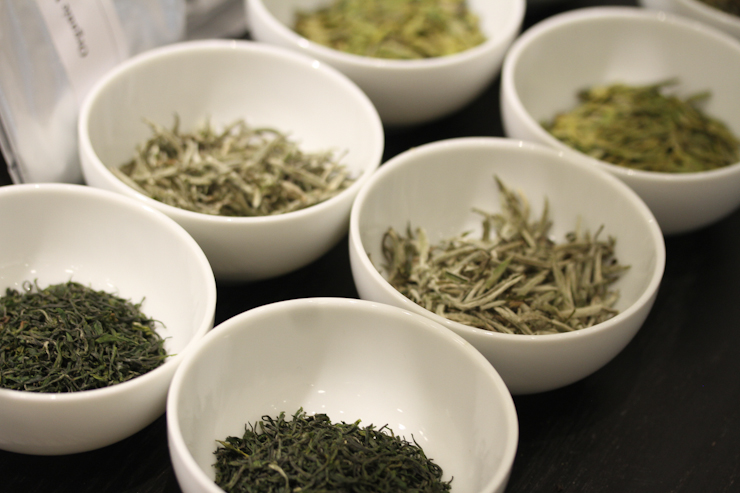
What’s the difference between an early spring tea and a later harvest of the same tea? How long is the harvest season typically for the teas you presented?
The early spring teas are harvested before the leaf has had time to develop the anti-oxidants responsible for bitterness and astringency while having an abundance of amino acids responsible for developing a heightened sweetness. The balance between bitterness and sweetness skews toward the sweeter end of the spectrum.
Even people who love tea may not know much about its seasonality. Could you give a rough rundown of what sorts of teas are in season when, broadly speaking?
The quality of tea that I’ve come to appreciate is grown at high elevations, which slows the growth of the leaf, allowing for more flavor development. These teas are harvested 3-6 times a year at most and at the highest elevations as few as 1-3 times a year. Typically the components in tea responsible for particular flavors are harvested at specific times. For example green and white teas taste best when made from leaf harvested in the spring, while black and oolong teas taste better with leaf harvested in summer or fall. So late spring through the early fall is generally when green and white teas are best, while black and oolong teas tend to taste best in late summer through late winter.
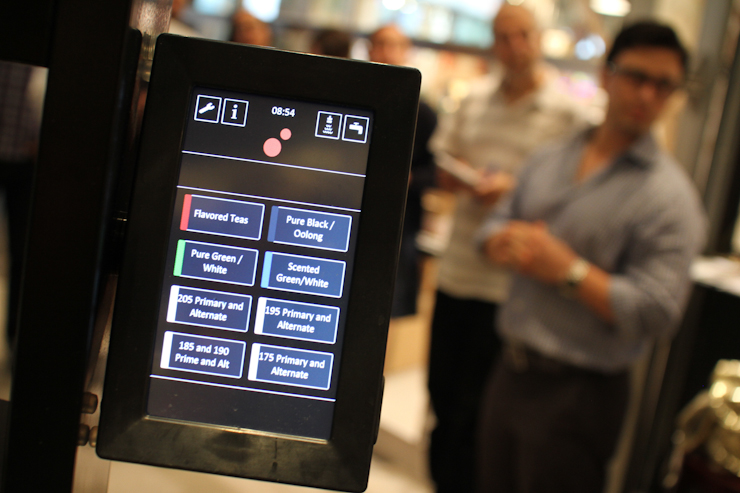
What’s your favorite time of year for tea harvests? Right now?
My favorite time for tea harvests is probably the spring into the summer since very little tea was produced during the winter, the layoff makes me yearn for the fresh crop. Especially in years, such as this year where the weather has cooperated and the tea is exceptional.
How long would it take an early spring harvested tea, like the Green Needles you demonstrated, to travel to Chicago for you to try it in your tea lab?
In a typical year, I would see finished tea samples within 4 or 5 days after production. Once approved I’ll air freight the tea so that we can offer the tea at its peak freshness.
Is the shipment of tea dramatically different from the shipment of coffee, or are there similarities?
Often with coffee, the coffee will rest in a warehouse and the cost of air freight is prohibitive. The majority of our tea arrives 8-12 weeks from origin. With the early spring and some of the finer, teas that will lose some of their complexity in as little as 12 weeks, we will airfreight them so that they taste as fresh as possible.
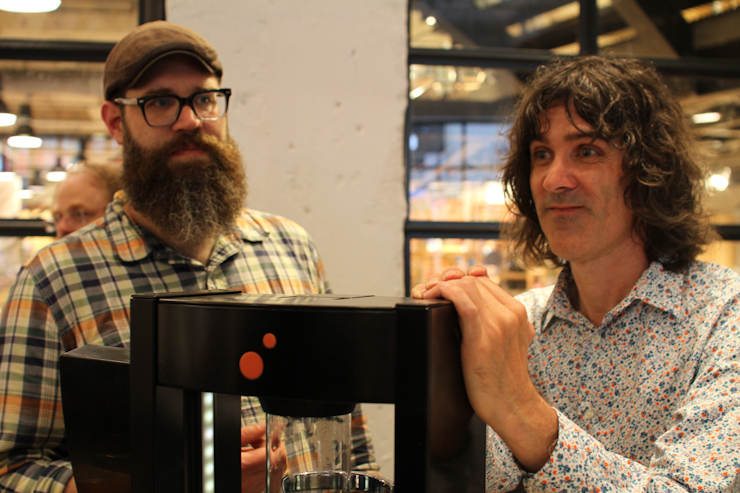
Finally, a lot of early harvest teas may be hard for some people to find easily, or to find good quality representations of, where they live. What advice would you give someone who was just starting to explore the seasonality of tea, particularly these teas which have especially good early harvests?
Look for tea purveyors, such as Kilogram, that list harvest dates and crop years on their packaging or website. All of the Kilogram seasonal offerings are available through the Intelligentsia website.
Thanks, Doug!
Liz Clayton is the author of “Nice Coffee Time“, a regular columnist for Serious Eats: Drinks, and New York City chief at Sprudge.com. She writes about music for the New York Observer, and lives in Brooklyn. Read more Liz Clayton here.
